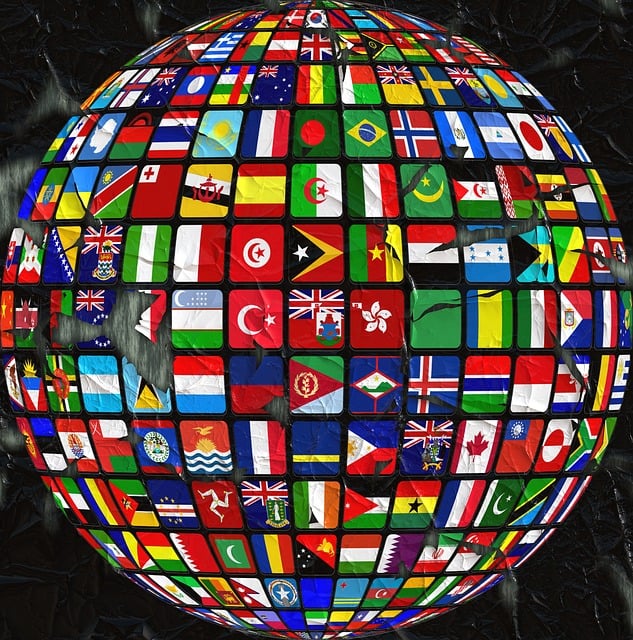Blog
The New Marketing Realities
Table of Contents
ToggleThe marketplace is dramatically different from even 10 years ago, with new marketing behaviors, opportunities, and challenges emerging. In this blog we focus on three new marketing realities transformative forces: technology, globalization, and social responsibility

Technology
The Rise of Automation
Automation is like having a superpower for your marketing strategy. With tools that automate tasks like email campaigns, social media posts, and even customer service, you save time and boost efficiency. Imagine your marketing running smoothly in the background while you focus on the bigger picture!Data-Driven Decisions
Gone are the days of guessing what your audience wants. Thanks to advanced analytics, you can now make decisions based on real data. By tracking customer behavior and preferences, you can tailor your marketing efforts to what truly works. It’s like having a crystal ball that shows you the future of your marketing success.Personalized Customer Experiences
Technology allows you to create personalized experiences for your customers. With tools like AI and machine learning, you can deliver content and offers that feel tailor-made. Whether it’s a product recommendation or a targeted ad, personalization makes your audience feel special—and that’s a win for your brand. In this new marketing reality, technology isn’t just a tool; it’s your best ally. Embrace it, and watch your marketing efforts soar to new heights!According to book Philip Kotler (father of modern marketing)
The pace of change and the scale of technological achievement can be staggering. The number of mobile phones in India recently exceeded 500 million, Facebook’s monthly users passed 1 billion, and more than half of African urban residents were able to access the Internet monthly.23 With the rapid rise of e-commerce, the mobile Internet, and Web penetration in emerging markets, the Boston Consulting Group believes brand marketers must enhance their “digital balance sheets.” 24 Massive amounts of information and data about almost everything are now available to consumers and marketers. In fact, technology research specialists Gartner predicts that by 2017, CMOs will spend more time on information technology (IT) than chief information officers (CIOs). Aetna’s CMO and CIO have already collaborated successfully for years, launching new products and services including iTriage, a popular health app for the iPhone. With iTriage, users can research ailments, find nearby physicians, and learn about prescribed medicines.25 Procter & Gamble (P&G) is determined to stay ahead of technology trends. The old credo “information is power” is giving way to the new idea that “sharing information is power.”27 Software giant SAP’s online community numbers more than 2 million customers, partners, and others. Once a year, 100 are chosen to contribute ideas to product development.28 At the other end of the size spectrum, by running Facebook ads offering a free cut, shampoo, and hot towel treatment to new customers in exchange for name, phone number, e-mail address, and preferred social network, The Gent’s Place barbershop in Frisco, TX, has picked up 5,000 clients. Its average marketing cost for each was $10.13, which it quickly recoups from repeat purchases. Even traditional marketing activities are profoundly affected by technology. To improve sales force effectiveness, drug maker Roche decided to issues iPads to its entire sales team. Though the company had a sophisticated customer relationship management (CRM) software system before, it still depended on sales reps to accurately input data in a timely fashion, which unfortunately did not always happen. With iPads, however, sales teams can do real-time data entry, improving the quality of the data entered while freeing up time for other tasks.


Social Responsibility
In today’s marketing world, social responsibility is more than just a buzzword—it’s a must-have. Consumers are increasingly choosing brands that align with their values. If your business shows that it cares about the world, you’ll not only attract customers but also build trust and loyalty.
The Power of Purpose
Having a strong sense of purpose can set your brand apart. Whether it’s supporting environmental causes, promoting social justice, or giving back to the community, your purpose shows that you’re more than just about profit. It’s about making a positive impact. When your customers see that you care, they’re more likely to care about your brand in return.
Ethical Marketing
Ethical marketing means being transparent, honest, and fair in all your marketing practices. It’s about doing the right thing, even when no one is watching. By avoiding misleading claims and respecting customer privacy, you build a reputation as a trustworthy brand. And in today’s world, trust is everything.
Engaging with Your Community
Social responsibility isn’t just about big gestures; it’s also about engaging with your community. Whether it’s supporting local initiatives, partnering with non-profits, or simply listening to your customers’ concerns, being involved shows that you care. Plus, it helps you build a stronger connection with your audience.
In the new marketing realities, social responsibility isn’t optional—it’s essential. By showing that your brand stands for something good, you can create meaningful connections and make a positive difference in the world.
According to book Philip Kotler (father of modern marketing)
Globalization
In today’s interconnected world, globalization is reshaping how businesses approach marketing. With the internet breaking down barriers, your audience is no longer just local—it’s global. This opens up exciting opportunities but also brings new challenges.
Reaching a Global Audience
Thanks to globalization, you can now reach customers from all corners of the world with just a few clicks. Whether you’re a small business or a multinational corporation, your potential market has expanded exponentially. But remember, what works in one country might not work in another. Adapting your marketing strategies to different cultures and preferences is key to success.
Embracing Cultural Diversity
When marketing on a global scale, embracing cultural diversity is crucial. Your brand should be sensitive to different customs, languages, and traditions. By creating campaigns that resonate with diverse audiences, you show that your brand values inclusivity. This not only helps you connect with customers but also strengthens your brand’s global reputation.
Localizing Your Marketing Efforts
Localization is the secret sauce to successful global marketing. It’s about tailoring your content, products, and messaging to fit the unique needs of each market. This could mean translating your website, adjusting pricing strategies, or even tweaking your product to suit local tastes. When you localize, you make your brand feel closer to your audience, no matter where they are.
In the new marketing realities, globalization offers endless possibilities. By embracing the global stage while respecting local differences, you can grow your brand and create meaningful connections worldwide.
According to book Philip Kotler (father of modern marketing)
Business minority buying report
Globalization changes innovation and product development



Getting to Marketing 3.0
Philip Kotler, Hermawan Kartayaya, and Iwan Setiawan believe today’s customers want marketers to treat them as whole human beings and acknowledge that their needs extend beyond pure consumerism. Successful marketing is thus distinguished by its human or emotional element.
A third wave of thinking, values-driven and heralded as “Marketing 3.0,” has moved us beyond the product centric and consumer-centric models of the past, these authors say. Its three central trends are increased consumer participation and collaborative marketing, globalization, and and the rise of a creative society.
